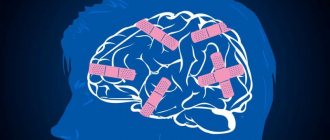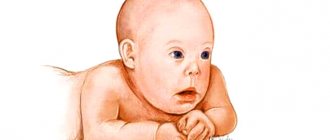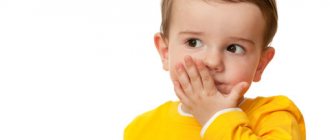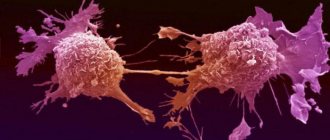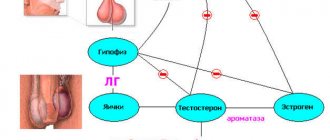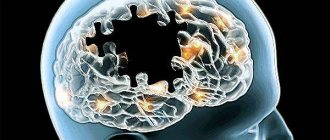Reasons for deviant behavior
Researchers such as E. S. Tatarinova, N. A. Melnikova, T. I. Akatova, N. V. Vorobyova, O. Yu. Kraev and others studied the causes of deviant behavior. Summarizing the authors’ research, we can identify the following reasons for the formation of deviant behavior.
- Errors in family education that destroy family education styles.
- Negative influence of spontaneous group communication (“bad company”).
- Abnormal personality development, crisis and difficult life situations.
- Accentuations of character (you can read more about this in the articles “Accentuations of character in psychology: norms or pathology”, “Accentuations of character in adolescence”).
- Psychosomatic disorders.
- Anomalies of psychophysical development.
- Lifestyle and risk factors (external circumstances).
Among the negative factors, two groups can be generally distinguished: public and private factors. The first includes the political, economic, social state of the country, and the general level of morality. Private factors mean personal motives, beliefs, goals. It is noted that personal factors are the basis of deviant behavior, and external factors are the guiding element, that is, they dictate the variant of deviation.
If we consider deviant behavior from the perspective of clinical psychology, we can distinguish two groups of factors: biological and social.
- The first include age-related crises, as well as congenital and acquired brain lesions.
- The second group includes the specifics of the environment, training and upbringing. Moreover, a stable connection between these factors has been noted, but it has not yet been determined exactly how they are interconnected.
All-Russian negative factors
After analyzing a number of scientific works and reports, I was able to identify several leading all-Russian factors contributing to the development of deviant behavior as a mass social phenomenon. So, the negative factors include:
- growing commerce;
- cultivating physical strength and success;
- abundance of advertising;
- availability of digital materials, alcohol, cigarettes and drugs;
- uncertainty in life guidelines;
- the ever-evolving entertainment industry;
- shortcomings in the system for preventing deviations;
- sickness of the population (increase in socially dangerous diseases);
- information progress in Russia, transition to virtual technologies.
The media play a major role in the formation and development of deviant behavior. They promote various forms of deviations and antisocial behavior, affecting mainly the unformed consciousness (children, adolescents). Accordingly, thereby forming a personality with behavior that goes beyond accepted norms.
A striking example of the impact on consciousness is the Internet, or in a narrower sense, computer games. Often the virtual world is transferred to reality, which causes maladaptation of the individual.
Another option for the negative impact of the Internet is the desire to “hype” (gain popularity). And here we find echoes of Merton’s theory (I’ll describe it below). People strive to achieve their goal (popularity) in any way. And, unfortunately, as practice shows, it is easier to do this by killing someone (or beating them) and posting the video online, having sex in a public place, and so on. In pursuit of fame and “likes,” people forget about all standards of decency.
Types and forms of deviant behavior
To date, there is no single classification of deviant behavior. There are several different interpretations for one feature or another. The choice of reference classification depends on the sphere within which deviant behavior is analyzed and its main characteristics.
Classification by N.V. Baranovsky
The author identified socially positive and socially negative deviant behavior.
- The first ensures the progress of the entire society. We are talking about explorers, artists, generals, rulers. It is these people who doubt the established order of things, see the world differently and try to change it. That is, this is a productive type of deviant behavior.
- Socially negative deviant behavior is destructive in nature and ensures regression of the entire society. We are talking about criminals, addicts, terrorists.
This is the main primary classification. She explains what I talked about in the article “Theories of Deviant Behavior.” Everything is clear with productive: its type is the only possible one. While deviations in behavior with a minus sign have multiple guises. The classifications presented below interpret destructive behavior.
Classification by V. D. Mendelevich (domestic psychiatrist, narcologist, clinical psychologist)
I want to consider this author’s classification in more detail and consider it a reference point in my work. The author identifies the following types of deviant behavior:
- crime;
- alcoholism;
- addiction;
- suicidal behavior;
- vandalism;
- prostitution;
- sexual deviations.
In addition, V.D. Mendelevich notes that the type of behavior (deviant or normal) is determined by how the individual interacts with the world around him. He identifies five main styles of human interaction with society, that is, five styles of behavior, four of which are types of deviant behavior:
- Delinquent (criminal) behavior. This behavior arises when the individual is convinced that reality must be actively fought, that is, counteracted.
- Psychopathological and pathocharacterological type of deviant behavior. It manifests itself in a painful confrontation with reality. This is due to changes in the psyche, in which a person sees the world exclusively as hostile to him.
- Addictive behavior. Characterized by withdrawal from reality (use of psychoactive substances, passion for computer games, etc.). With this type of interaction, a person does not want to adapt to the world, believing that it is impossible to accept its realities.
- Ignoring reality. This is usually typical for a person engaged in some narrow professional focus. He seems to be adapted to the world, but at the same time he ignores anything other than his craft. This is the most common type of behavior, the most acceptable by society. This is normal behavior. The individual adapts to reality. It is important for him to find and realize himself in real life, among real people.
It has been experimentally proven that there is a relationship between all types of deviant behavior, as well as the dependence of deviations on the relationship of the individual with society.
There are other classifications, but I want to introduce you to them briefly. If something interests you, you can find additional material by authorship.
R. Merton's classification
The sociologist identified five types of deviations:
- subordination;
- innovation (achieving a goal by any means, even criminal);
- ritualism (observance of rules by self-infringement);
- retreatism (withdrawal from reality);
- rebellion (rebellion, revolutions, antisocial behavior).
That is, the classification is based on the relationship between the individual’s goal and the means to achieve it.
Classification by A. I. Dolgova
Divides deviations into two groups:
- deviant behavior;
- crime.
This division is often used when interpreting the behavior of children and adolescents. That is, a line is drawn between disobedience and serious offenses.
Classification by O. V. Polikashina
Identifies the following forms of deviations:
- committing offenses;
- drunkenness;
- addiction;
- substance abuse;
- use of psychotropic substances;
- early sexual promiscuity.
Generally accepted classification in clinical psychology
Clinical psychology has its own concepts and types of deviant behavior. According to the DSM IV classification, in conduct disorder (as deviant behavior is called in the medical field of psychology), four types of behavior problems can occur:
- aggression towards others;
- destruction of property;
- theft;
- other serious violations of the rules.
The International Classification of Diseases, 10th revision (ICD-10) identifies several types of behavioral disorders (hereinafter referred to as BD):
- PD limited to the family (antisocial or aggressive behavior manifested at home or towards close people);
- unsocialized RP (dissocial or aggressive behavior towards other children);
- socialized RP (dissocial or aggressive behavior in children who are well integrated into the peer group);
- oppositional defiant disorder (outbursts of anger, bickering, defiant behavior).
I will try to explain the meaning of multiple classifications and the possibilities of their application. For example, if it is established that the cause of deviations lies in pathological changes in the brain, then you need to focus on ICD-10 and DSM IV. If behavior was influenced by a social (psychological) factor rather than a biological one, then it is better to pay attention to the classification of V. D. Mendelevich.
Classification of types of deviant behavior
Today, sociologists identify the following types of deviant behavior:
- Tendency to alcoholism and use of surfactants
- Criminal activity
Each type of deviant behavior requires special attention: in particular, preventive measures and ways of correction.
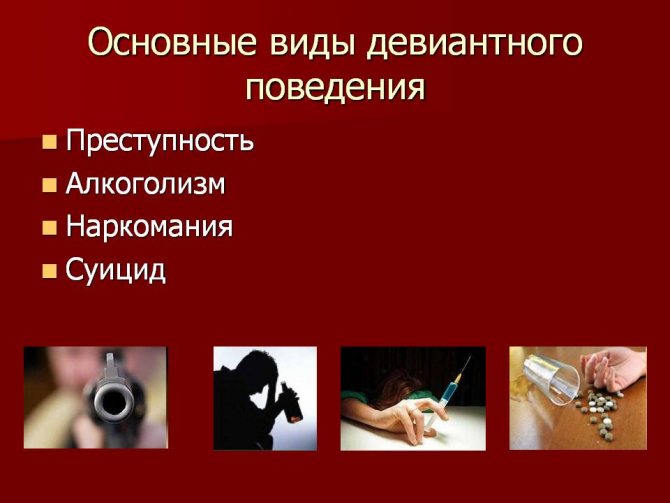
Types of adolescent deviance
- Curiosity and sensation seeking. As statistics show, quite often teenagers try drugs based on simple curiosity, as well as the stories of others that the use of surfactants will allow them to experience fundamentally new sensations that can bring new bright colors to their lives.
- The desire to be like everyone else and keep up with peers. One of the features of adolescence is that during this time the social situation in which the child finds himself undergoes dramatic changes. And the role of the main authority in a child’s life gradually shifts from family and school to peers and the street. In an effort to earn their trust and not stray from the group, teenagers are capable of the most rash acts.
- Presence of a dependent relative in the family. If one of the teenager’s parents or relatives has a significant history of using alcohol, drugs or other psychoactive substances, the teenager may also become accustomed to them by unconsciously copying their behavior patterns. A significant role in this is played by the fact that in families where there are people who smoke or drink, alcohol and cigarettes are freely available to children.
- Lack of reliable information about the effects of surfactants on the body and the consequences of their use. Most teenagers who decide to take a dose of a drug for the first time or smoke a cigarette are really confident that it will not cause them any harm. And, moreover, they will be able to give up a bad habit at any time.
- Psychological characteristics that are a risk factor for the development of forms of addictive behavior (impulsivity, excessive curiosity, frequent mood swings, increased excitability).
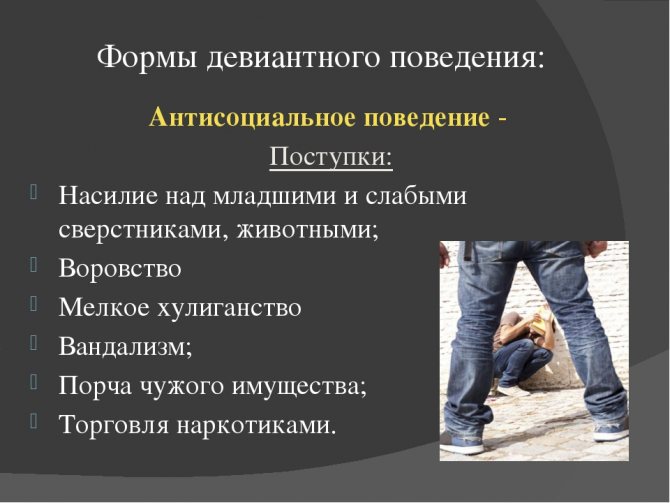
Crime is a socially dangerous act that jeopardizes the safety, health and lives of people around them. For committing a crime, punishment is provided in accordance with the current Criminal Code of the Russian Federation.
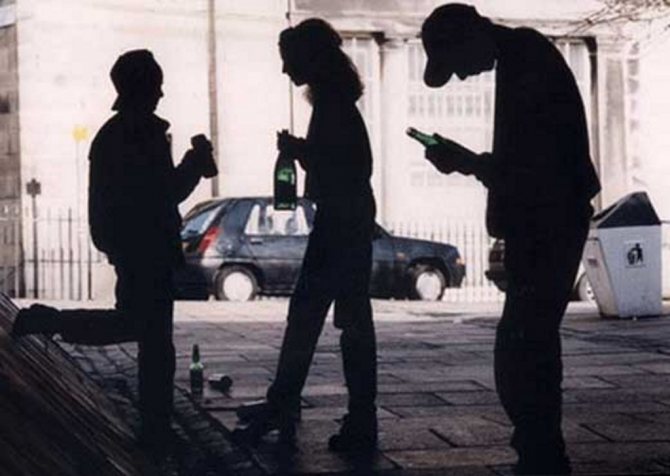
Teenage crime and alcohol are linked
Recent years have been marked by an increase in juvenile crime rates. In order to better understand the reasons for this phenomenon, you need to pay attention to the motives that push teenagers to commit such offenses.
- Statistics show that the most typical motive for teenagers who commit crimes is self-interest: interest in personal gain. Selfish motives explain most thefts and damage to other people's property.
- Hooligan motives are irrational and most often defy any logical explanation. Guided by it, the teenager himself often cannot find at least a more or less plausible explanation for his action. Hooligan acts are most often committed under the influence of alcohol and psychoactive substances.
- Other causes of delinquency can also be the personal characteristics of a teenager, such as selfishness, disrespect for accepted social norms, a low level of sociocultural development, a feeling of hatred and anger.

In general, it is worth noting that, in the broadest sense, the causes of deviant behavior in adolescents can be divided into two main groups, which include biological and social factors.
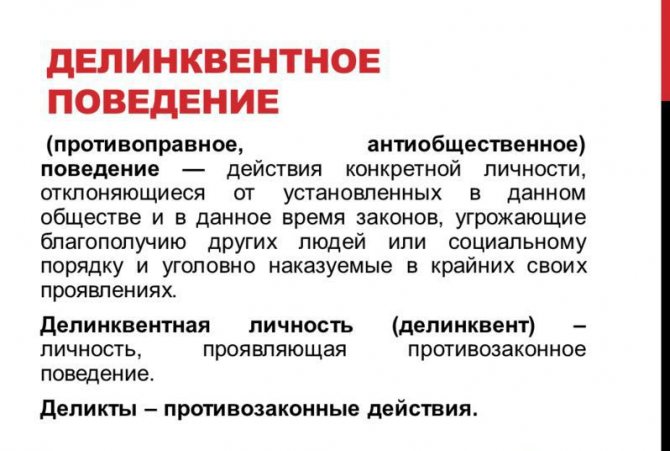
What is delinquent behavior designation
The psychological reasons for the deviant behavior of most adolescents also directly depend on the style of family education. For example, statistics have shown that most often teenagers brought up in socially disadvantaged, low-income, and often single-parent families are convicted of crimes. The risk of a teenager becoming involved in criminal activity also increases significantly if there are people in his family who lead an antisocial lifestyle.
The psychological situation in the family also plays an important role: teenagers, who often witness quarrels, shouting and scandals at home, more often than others find themselves involved in the bad company of their peers.
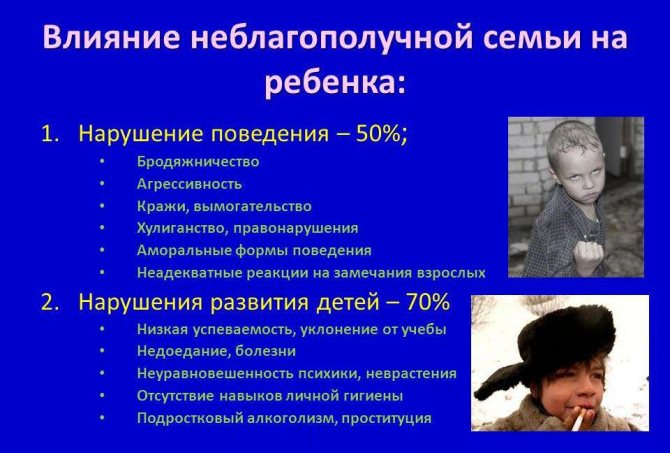
Dysfunctional families - a social cause of deviant behavior
Families with obvious or hidden disadvantage can also include:
- Conflict families, where between relatives there are pronounced differences in worldview, views on education, and there is no mutual understanding.
- A formal family where there is no understanding, trust and mutual respect between family members. Quite often in such families, parents are on the verge of divorce, but for many reasons (this may include reluctance to participate in the trial, material interest, etc.) they continue to cohabit without maintaining a relationship with each other.
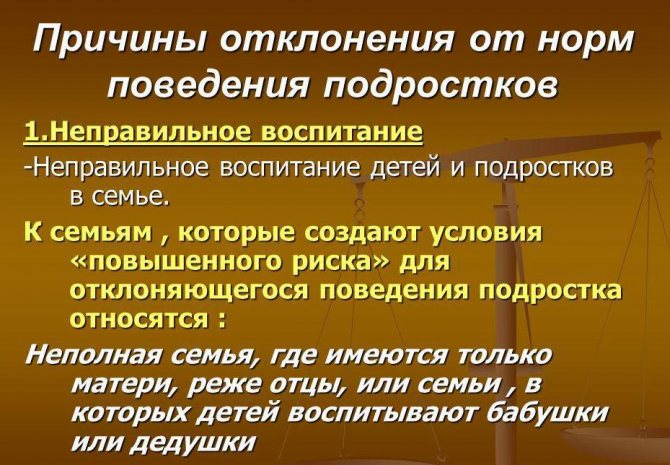
Causes of adolescent deviance
Mistakes made by employees of educational institutions are also, to a large extent, a risk factor for the formation of forms of deviant behavior in minors.
The classification includes various types of deviant behavior: criminogenic level, pre-criminogenic level, pre-deviant syndrome.
Pre-criminogenic level, which does not pose a serious danger to society: violation of moral standards, minor offenses, violation of rules of behavior in public places; use of narcotic, alcoholic and toxic substances; avoidance of socially useful activities.
Types and forms of deviant behavior in children and adolescents

I would like to include in a separate category children’s and adolescent deviations, which are primarily due to the specifics of the ages themselves. Among the common deviations, the following forms can be distinguished:
- risky sexual behavior;
- self-destructive behavior;
- vagrancy;
- new forms of deviant behavior (involvement in totalitarian destructive sects and other public organizations that manipulate consciousness, terrorism, deviations using the Internet and computer).
According to the direction of deviation, they can be divided into:
- deviations of selfish orientation;
- aggressive deviations directed against the individual (self-destruction);
- socially passive deviations (various kinds of departure from reality).
Within the framework of self-destructive behavior, several more forms can be distinguished:
- hidden and direct suicide;
- disorders of habits and desires;
- eating disorders;
- substance use disorders;
- Personality behavioral disorders in the sexual sphere.
Thus, in adolescence and childhood, deviant behavior is more often manifested by aggression, evasion from school, running away from home, drug addiction and drunkenness, suicidal attempts, and antisocial behavior.
- The most popular deviation of adolescence is dependent behavior.
- It is not uncommon for a person who has not yet formed a desire to escape from reality, from problems and misunderstandings. Perhaps this is the easiest way.
- In addition, addictions can be formed based on the teenager’s desire for adulthood. And the simplest form of adulthood is external copying.
- Another common cause of addiction is the teenager’s desire to establish himself among his peers, gain authority and trust. After all, peers at this age are the main “judges” and “audience”.
Girls in adolescence are more likely to develop sexual deviations. Active puberty is directly related to the development of secondary sexual characteristics, which can lead to ridicule from peers or unwanted sexual advances. In addition, girls often begin relationships with older young men, which promotes sexual activity and various risky and antisocial behaviors.
It is worth noting that deviant behavior of adolescents is not always negative. Sometimes teenagers want to find something new, to overcome stagnation and conservatism. On this basis arise:
- music bands;
- theater companies;
- athletes;
- young artists.
You can read more about the characteristics of deviant behavior in children and adolescents in my work “Deviant Behavior in Children and Adolescents: Causes, Prevention and Correction.”
Definition of the concept
Deviant behavior is a violation of social norms that has become permanent. Accordingly, deviant teenagers are children who regularly behave contrary to society. There are several approaches to interpreting this concept:
- Sociology. Deviant behavior is actions that are considered harmful in a particular society. Caused by a violation of the ability to assimilate and reproduce social norms.
- Medicine. In this approach, deviant behavior is caused by mental illness or borderline mental disorder.
- Psychology. Here, deviant actions are provoked by psychological phenomena, for example, the inability to find a competent way out of a conflict situation.
It is necessary to consider deviant forms of behavior of children and adolescents comprehensively, based on all these approaches.
Important! This is not always a negative thing. It can be constructive. To change broken or harmful social norms, you need to break them. If a leader does something like this, it is considered normal. Society allows a person with a high level of trust to violate social rules, but within the framework of people’s values.

Two teenagers breaking social norms
If an ordinary person violates social norms, then this can be punishable by law. After some time, his activities may be assessed positively. For example, dissidents were condemned during the Soviet era. Now in many countries they are considered heroes.

